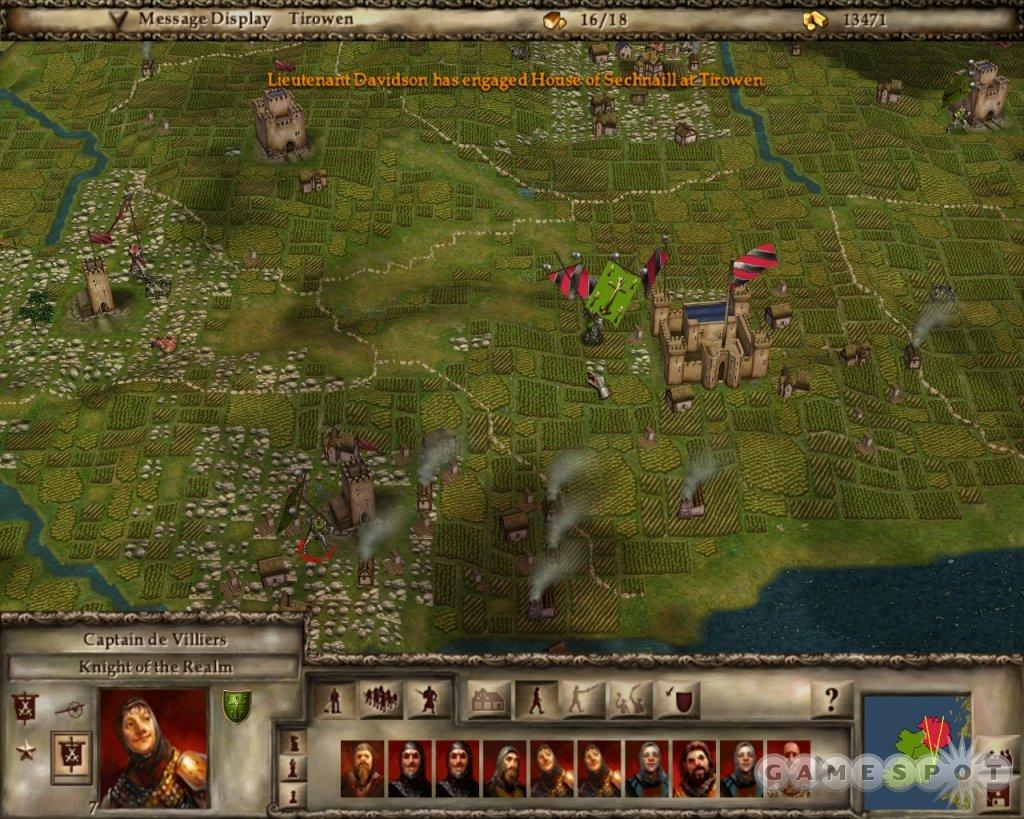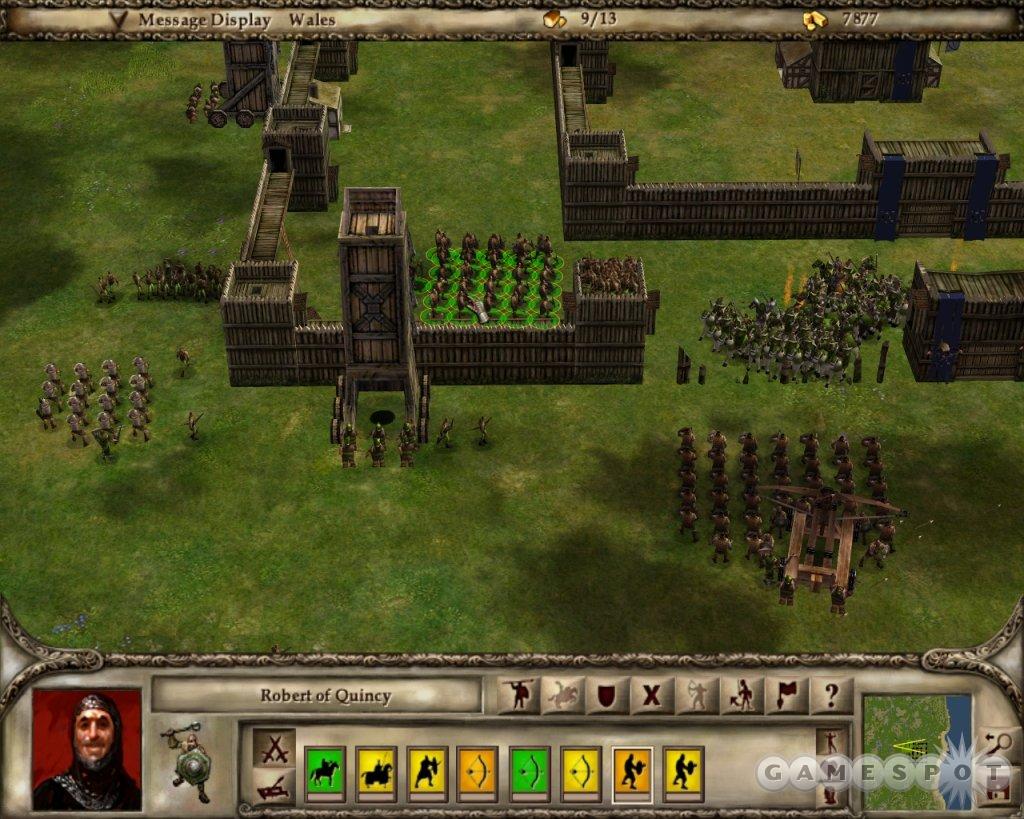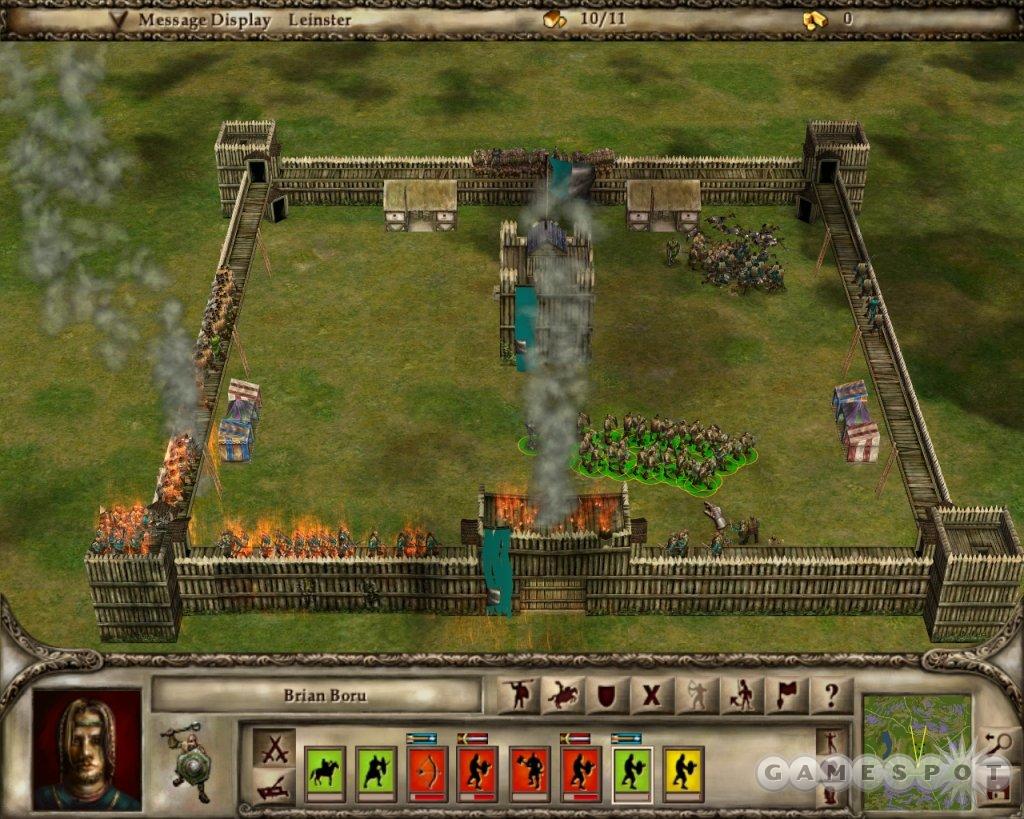The road to release for Impressions Games' latest, Lords of the Realm III, has been a bumpy one. Last fall, Sierra abruptly yanked the game from the November shipping schedule and postponed its release date until spring. Then, just a month before the game was finally due to hit stores in March, the publisher announced that it would ship at a $19.99 budget price. Given the usual state of most budget-priced PC games these days, this usually isn't a good sign. So you'd be forgiven for assuming the game to be something of a disaster. However, you'd also be wrong. Lords of the Realm III is one of the freshest, most satisfying games produced by Impressions in years, and it's a great real-time strategy game in its own right.

Lords of the Realm III makes some pretty major changes to the formula. All of the typical elements from the developer's creaky city-building series have been dumped in favor of a real-time strategy approach that goes heavy on tactics and light on resource-gathering. Medieval kingdom management is streamlined and easy to pick up, yet at the same time, the scale of play is epic enough that you can conquer whole nations and besiege numerous castles simultaneously.
Those looking for a straightforward sequel to Lords of the Realm II, however, will be disappointed. This is a very different game, which is a fact that shouldn't surprise anyone since its predecessor was released in 1996. Where the 8-year-old Lords of the Realm II was a rudimentary city-building sim where you had to put smiles on the faces of your peasants, the follow-up is a straightforward RTS that's spread across a strategic map interface and a combat screen. Events take place on the two levels simultaneously in real time (you can't even pause to give orders), so you can't get so wrapped up in directly managing a battle at one castle that you forget about what's happening at another. Instead, you have to bounce back and forth between the two, manually controlling key conflicts and letting the computer handle everything else.
"Elegant" and "simple" are the best words to use when describing this system. It doesn't provide an in-depth perspective on running a medieval kingdom, and as such, it is far removed from the much more detailed Lords of the Realm II. However, it does supply a catchy Cliffs Notes version that doesn't get bogged down in minutiae. Impressive artificial intelligence allows you to rely on the computer to win the battles that you should win, and it doesn't make you feel as though you have to micromanage every conflict. Additionally, you can duck in and out of battles as often as you want. For example, if you don't trust the computer's ability to completely handle the assault on a strongly fortified castle, you can manually set the siege engines in place and arrange your troops before turning over control.
Being able to trust the artificial intelligence is a good thing in Lords of the Realm III, since each of the four solo campaigns (set in medieval Ireland, England, France, and Germany) require you to fight on two or three fronts at once. You might be razing a village, besieging a castle, defending a castle, and waging war in the field simultaneously. Thankfully, the combat engine focuses more on tactics than on rushing. Troops are organized into companies that are led by knights, which simplifies orders since a single click sends a group of soldiers into the fray. Most important decisions are made before the battle, so you don't have to be an expert mouse-slinger to win the day. It's more vital to set a proper order, choose from the eight available formations (two to four are open to each company, depending on unit type), and maneuver troops into appropriate attack positions (terrain matters) than it is to click quickly once the battle begins. Otherwise, units can panic and be routed.

Unit types also keep things fairly simple. While there are 18 different soldiers that run the gamut of medieval European specialties, from peasant militias, to cavalry, to Teutonic knights, they each fall into a few basic categories that work well for most tactical plans. Each may have wildly different strengths--so, for instance, nobles are far stronger than swordsmen--but you can generally use all classes of foot soldiers in the same way. There are, however, counter-units that are good for specific situations. Pikemen, for example, are best-suited for use against cavalry charges. Ranged units are deployed in similar fashion. Of course, though, you have to take into account such variances as the added power of Welsh longbowmen over regular bowmen. Overall, there is enough variety to keep you interested but not so much that you're constantly looking to the manual.
Battles are frenetic, but at least you don't have to worry about the home front. Kingdom management is centered on the assignment of four different types of vassals to develop parcels of land. These characters are responsible for all of the base development and unit deployment in the game. Sign them into your service, and they recruit soldiers, bring along the family siege weaponry, make money, grow food, and are required to upgrade buildings. Deploy a knight, and he'll fortify a parcel and raise troops. Move a clergyman out to boost both your health and your Christianity rating, which improves productivity. Call on the burgher to build towns and to generate gold, or send in the serf when you need to drum up manpower to produce food. Vassals automatically collect the game's two resources (of food and gold crowns), so all you have to do is keep them deployed in the right areas to ensure that your armies are fed and that your treasury is full.
Some management is required when looking after the vassals, though. In addition to the four main varieties, they are sorted into experience levels (lesser, common, regional, and kingdom) and often come with bonuses. More-powerful knights, for instance, typically feature bonuses to such qualities as ferocity and bravery. Others might require you to fulfill specific tasks. Grazino the Wicked, for instance, might demand that his lord's Christianity rating be no higher than two, while Dreux the Valiant might demand a chivalry rating of at least six. Burghers, clergymen, and serfs don't have personalities as developed as those of knights, although they also have their own bonuses. Top burghers, for example, have higher skills when it comes to raising money.

Different knights come equipped with varied unit types and siege weaponry, too. At certain times--particularly when you're gearing up to besiege a castle and need knights with access to siege engines, mangonels, trebuchets, and the like--you need to play musical chairs to shuffle incoming knights with better equipment into the mix. However, you can also go on a buying spree in a burgher vassal's city, which allows you to hire special agents like siege engineers, who come with such hardware. Vassals appear to continually offer you their services during a campaign--since they are sparked by both your successes on the field and by specific trigger events--so there is usually a strong lineup available whenever new parcels of land are added to your kingdom.
The only complaint with all of the above is that sometimes the system works too well at automating kingdom-building endeavors. From the starting position in most campaigns, you can build a powerful army right off the bat by combining troops from four or five vassals. Then you can just let the computer win siege after siege for you. This leaves you with nothing to do but wait for battles to be resolved, since the management portion of the game deals with little but selecting and deploying vassals. Diplomacy also feels tacked on and is lacking some important options. You can give gifts to rivals to encourage alliances, for example, but you can't demand alliances.
Fortunately, later campaigns increase in difficulty, largely due to the more-advanced castles found in later eras as you move from the 11th century to the 15th. By the time you reach France and Germany, for instance, most attacks on enemy fortresses have to be manually directed because the enemy artificial intelligence goes from easygoing to murderous. Advances are countered, weak points are searched out, and computer sides will even dig in, develop cities, and hire loads of mercenary soldiers around the estate if you begin to carry the day in the outlying regions of a lord's territory.
Just as the gameplay is much better than you'd probably expect from a $20 release, so is the audio and video. The game's sound quality is immaculate. The most notable feature is a gothic musical score that boasts an eerie organ that's reminiscent of Halloween-inspired versions of Bach's Toccata and Fugue in D-minor. Battles occur amid a cacophony of metal clashing and shouts. Unit-recognition responses are varied and inspired. Hearing a knight yell "Torch the countryside!" when you give the raze command is immensely satisfying.
The visuals are also very good, though they're not particularly polished. While everything is in 3D--even terrain features--animations are a little choppy. Cavalry units slide more than gallop, and troops going over a castle wall bunch up so tightly that they form a pulsating mass. Still, an impressive amount of detail is provided, particularly during sieges when you set afire a palisade with flaming arrows or you bring down a stone wall with a catapult.

There is also a lot of content here for a bargain game. Along with the four campaigns, which feature more than a dozen lengthy missions that have you fighting against numerous enemy lords, there are single-player maps based on famous battles, such as those at Hastings and Agincourt. Expect to dedicate a good 40 hours to playing everything. Internet and LAN multiplayer modes allow up to eight players to battle it out, and Sierra has already released a downloadable castle editor that lets players build custom fortresses that can be exported into single-player and multiplayer scenarios.
Impressions has hit a great balance in Lords of the Realm III by providing lots of duties to fulfill, as both a king and general, while still managing to dodge the usual pitfalls of micromanagement and flimsy tactical depth. A game as good as this deserves more respect than that offered by release delays and getting kicked out the door with no fanfare.